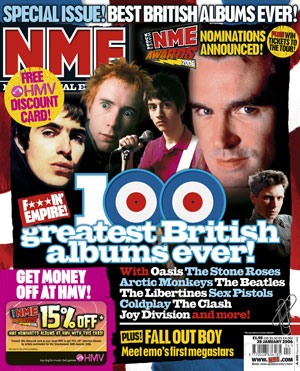NME and Kerrang are two music magazines on sale in Britan, which are both based on two different music genres. I have researched these magazines and found out the followng;
NME
Brief history; NME stands for the New Musical Express, and was first published in march 1952. In the 1960s the magazine became very popular due to frequently due to it regularly featuring groups such as The Rolling Stones and The Beatles on the front cover. During the 1970s, NME was the best selling music magazine in Britain. A major milestone in the history of NME, was when they offered a reader incentive to its audience. This was a cassette tape that was available for readers to buy at a discount price.
Typical content; The typical content of NME includes: music charts, music reviews, cocert dates, music news, upcoming bands/artists, albums and reviews, movies.
Typica reader; On average, around three times more men than women read NME magazine. The average age for NME readers is between the ages of 15-44.
Housestyle;The title on the front cover is always in a big font and has capital letters. This is to make it stand out and to help catch the readers eye. Also, the red colour of the title font is typical of every issue and is part of the magazines housestyle. Therefore, the magazine is very noticable to its regular readers.
How social groups are represented; I think this magazine is aimed at mainly males between the ages of 16-40. However, many women still read this magazine regularly. The reason i think this is because, the type of music that is featured, is mainly associated with females.
KERRANG
Brief history; Kerrang was first published on the 7th june, 1981 and it was edited by Geoff Barton. This issue of kerrang was only intended as a one off supplement which focused on the new wave of heavy rock music in the UK, in 'Sounds' newspaper. AC/DC was the band which was first ever featured on the cover of Kerrang.
Typical content; rock music chart, music reviews, cocert dates, music news, upcoming bands/artists, albums and reviews, movies.
Typical reader; Roughly, around three times as many men than women read Kerrang. Also, just over 14 times as many people aged between the ages of 15-44, read Kerrang than people aged 44+.
House style; All the titles in Kerrang are usually the same font and colour, mainly red, yellow or black. The title is always at the top of the front page and below it is a picture of a band.
How social groups are represented; Kerrang is mainly aimed at males who are interested in heavy rock culture and music. However, there are women interested in this that also read the magazine.
this information came from various websites including, Wikipedia, NME.com and Kerrang.com

